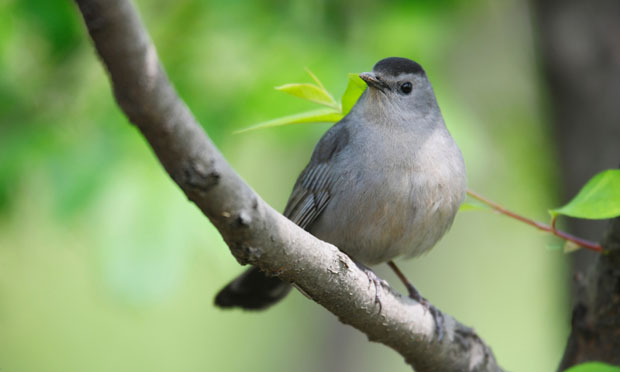According to the Environmental Protection Agency, urbanized land in the United States increased by 48% from 1982 to 2003 and now covers more than 100 million acres. This expansion of cities and suburbs has had significant impacts on wildlife through habitat loss, pollution and the introduction of nonnative species.
To better understand the issue, researchers at Towson University and the Smithsonian Conservation Biology Institute looked at nest success and juvenile post-fledging survival for gray catbirds (Dumatella carolinensis) at three sites in the Washington, D.C., area. The results were published in the Journal of Ornithology as “Population Demography of Gray Catbirds in the Suburban Matrix: Sources, Sinks and Domestic Cats.”
The study’s findings include:
- In the three areas studied, 61% of post-fledgling birds died before reaching independence. Causes of death included predation, starvation, collisions and disease.
- Predation on juvenile birds accounted for 79% of all deaths. Predators included hawks, crows, blue jays, chipmunks, rats, and domestic or feral cats.
- Nearly half of all bird deaths with a known cause were attributable to cats. One reason is that cat populations are “subsidized” by humans, allowing them to exist at densities far exceeding those of native predators.
- In some of the areas studied, predation was so serious that the birds studied could not replenish their numbers over time.
Despite some limitations, in particular the sample size, the researchers felt that the study demonstrated that “differences in predator communities, be they native or introduced, have the capacity to influence survival probabilities during both nesting and post-fledging stages” for birds in urban and suburban areas.
Keywords: biodiversity, wildlife, conservation, cats, nest survival, post-fledging survival, urbanization, source-sink dynamics


Expert Commentary